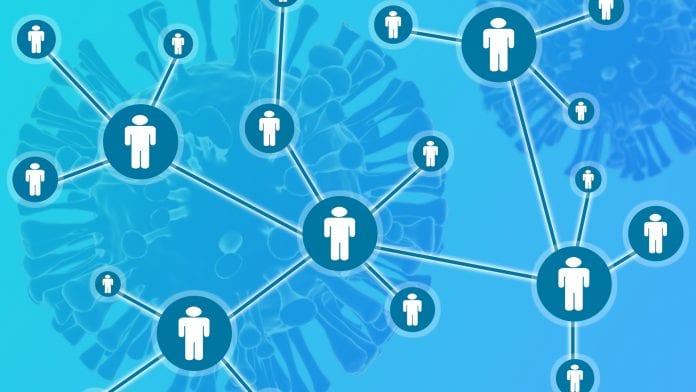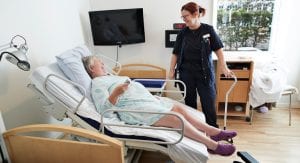
Healthcare Denmark CEO Jakob Skaaren Nielsen discusses innovation and technological developments within the Danish health and care sectors.
Healthcare Denmark, a public-private non-profit partnership based in Odense, acts as an ‘international gateway’ working to promote international awareness of Danish health and care expertise. Jakob Skaaren Nielsen, CEO of Healthcare Denmark, tells Health Europa Quarterly (HEQ) about innovation and technological developments within Danish healthcare.
Denmark has one of the benchmark health and social care systems in the world – what strain was placed on it by the pandemic?
The COVID-19 crisis has affected all countries in the world. Countries have taken slightly different approaches to the outbreak of COVID-19, while also being at different stages of the outbreak. Some countries, including Denmark, have seen a peak in COVID-19 cases and are gradually reopening their societies. During the pandemic, Danish public healthcare authorities, companies large and small and universities stood united to combine all resources to step up capacity to handle the crisis.
As a result of these public-private partnerships, new initiatives were developed and implemented with the purpose to make a difference for Danish citizens and healthcare professionals. These initiatives included solutions to reduce personal contact and keep distance between citizens in order to avoid further spread of the virus, increase hygiene measures in order to remove virus from physical items, introduce large-scale and rigorous testing in order to have real-time and precise information about the outbreak, establish real-time and accurate information about hospital capacity in order to prepare for a rapid and sudden increase in the number of admitted COVID-19 patients, and increase ICU ventilator capacity in order to prepare for a rapid and sudden increase in the number of COVID-19 patients admitted to ICU departments.
In addition, Denmark has experienced significant increase in tech solutions such as telemedicine, remote monitoring, and disease (self-) management which allow healthcare to be provided at home.

How were digital and telehealth technologies employed to alleviate the strain on the system and deliver care to patients? What levels of growth did you see in the use of such services and technologies?
In the past six months, and in contrast to many other European countries, Denmark has managed to keep the number of positive COVID-19 cases steadily low even with the gradual reopening of society. This is primarily due to the high test capacity that ensures fast detection; the high degree of social trust that means taking responsibility and following the national guidelines; and the new digital contact tracing tool that enables the Danish government and health authorities to react to outbreaks on a national, local and individual scale. The contact tracing solution, Columna Flow Pandemic Control, is a well-proven and highly effective digital tool for managing and following up on contact tracing initiatives during epidemics and pandemics. It supports the daily work of the more than 3,000 people who work with contact tracing nationally, providing a digital interface for registering contact tracing calls for positive COVID-19 cases and their close contacts.
Data from the contact tracing application is visualised in simple dashboards which provide the Danish government and health authorities with solid, data-driven decision support. The dashboards reflect the development over time across a variety of parameters such as number of positive cases and close contacts, time to contact, sources of infection, and travel-related infection tracing. The contact tracing system was developed by Systematic, the largest provider of digital health solutions in Scandinavia, in collaboration with the Danish health authorities; and has had a major impact on the ability to manage the COVID-19 situation in Denmark and scale the initiatives to match the increasing demand for contact tracing.
Denmark has also implemented initiatives to increase COVID-19-related hospital capacity and increase utilisation of existing equipment and staff. It is all a matter of knowledge about the national capacity of staff, needed COVID-19 equipment, and how to be able to increase efficiency and utilisation of this capacity.
Hospitals which had already implemented Real Time Location Systems (RTLS) were able to immediately pinpoint and document equipment and capacity to handle COVID-19 patients. By using RTLS to co-ordinate equipment, staff activity and patients, hospitals can also document the availability of trained and available staff – and they can report the exact capacity for new patient admittance at all times, given the patients they already have in treatment. Shortages of personal protection equipment (PPE) have been an issue for many hospitals and RTLS tracking of supplies enabled hospitals to report their stock status in a similar manner, in order to ensure that both capacity and needed supplies were available for new COVID-19 patients.
Another way to increase COVID-19 capacity has been to avoid admitting patients to hospitals unless absolutely necessary. This involves the challenge of being able to monitor and react to potential deteriorating and worsening conditions for COVID-19 patients in their own home. As such, telehealth solutions were implemented to monitor COVID-19 patients at home, which enabled hospitals to fine-tune their capacity and reduce the number of at-risk COVID-19 patients, who were admitted to hospital at any time.
The initiative to conduct video consultations through the app called ‘Min Læge’ (My Doctor) saw an impressive rise in the number of video consultations carried out (from 4,000 to 30,000-60,000 calls per month) primarily among general practitioners (GPs). Denmark has had a separate and secure infrastructure for video communication within the health sector in place since 2016 and has really reaped the benefits of this during the COVID-19 crisis being able to offer patients to stay at home and have video consultations with their GP in order to prevent spread of the virus.

The Danish Regions are asking for a considerable raise in health spending to keep pace with the demands of the ageing population. Do you think Denmark will be able to maintain its status as a leading healthcare system?
Like many other countries, Denmark is facing the demographic challenge of a fast-growing ageing population, which puts a severe strain on both the human and the financial resources required to maintain a high quality of elderly care.
In Denmark, we have a citizen-centred approach to a dignified elderly care with focus on involving and empowering every citizen and respecting their individual needs and preferences. By working with targeted efforts, elderly citizens can maintain their independence, gain control of their own life, and stay healthy in their own homes for as long as possible. Nursing homes and other care facilities have also been supplemented with efforts to help improve the quality of life for residents.
New assisted living technologies play an important role within the sector of elderly care. Danish municipalities and hospitals in the regions are implementing innovative technologies that support citizens in their daily routines, keeping them connected, physically active, and safe. These innovative solutions can help improve the quality of life for elderly citizens as well as support healthcare professionals in creating an efficient, coherent and high-quality framework for care, rehabilitation, and prevention.
Denmark will keep continuing to develop and expand the use of new assisted living technologies – in collaboration and dialogue with elderly citizens, their peers and care staff – to the benefit of citizens, healthcare professionals, and society.

Do you consider Denmark to be an innovator in healthcare? Can you provide a few examples of this?
In order to meet the current challenges in the healthcare sector, we need to embrace innovation and digital solutions – two factors that form the backbone of the Danish approach to a sustainable healthcare system. Innovation in healthcare can be strengthened by empowering patients and by including public health authorities and the private industry in trusted partnerships.
Denmark has had a long-standing tradition for working with innovation in healthcare and follows the principle of starting small but ensuring the possibility for scaling up promising initiatives. A number of organisations work to support continuous development: as an example, Denmark is one of the few (and one of the first) countries to establish a national agency for e-health under the Ministry of Health. For more than 25 years, Denmark has seen a significant rollout of IT services within the whole healthcare sector with the hospitals, general practitioners and municipalities leading the way. This is made possible by a set of continuously developed standards for the exchange of healthcare data. These standards are the foundation for exchange of relevant data between the different parts of the healthcare sector and are developed by the non-profit organisation MedCom, which links the different parties of the sector and supports a continued development.
The way healthcare data can be linked across the healthcare sector in Denmark is one of the country’s strongest points and one where Denmark really stands out. For instance, in 2018 an average of 5.5 million digital messages were exchanged per month in the healthcare sector alone.
Another example of Denmark’s innovative power is the Shared Medication Record, which was developed with the purpose of increasing patient safety and launched in 2010. The Shared Medication Record gathers all data on a patient’s medication, whether it has been prescribed by the hospital, a specialist doctor, or the GP. It also holds information about the distribution of the medication; when and at which pharmacy the prescription was picked up; as well as the specific drug administered. This information is available to the patient through an app, and the clinical personnel can access and update the Shared Medication Record directly from the EHR used in the hospital or private practice.
In 2013 vaccination data was added to the Shared Medication Record, which meant that when Denmark started giving vaccines for COVID-19 the information regarding patients’ vaccination status nationwide was already fully digitised.
All in all, the COVID-19 situation has served to highlight the benefits of the timely investments in infrastructure and continuous digitalisation of the Danish healthcare sector – aside from the video infrastructure and digitised vaccination data, the same goes for laboratory results (including COVID-19 test results) which was already shared via a nationwide database and made available for the patients though the ‘My Doctor’ app. This meant that existing infrastructure and digital solutions could be utilised to support Denmark’s extensive testing strategy and gradual reopening of the society at a much earlier and faster pace than most European countries.
How do you view international growth prospects for Danish suppliers to the care system?
Healthcare products account for an increasing share of Danish exports. The share of healthcare products in exports has increased from less than 10% in 2007 to 22% in 2020. The development and export of healthcare products is a significant Danish position of strength – only Ireland has a larger share than Denmark. Over the past number of years, Danish companies have increased their exports of pharmaceuticals, health tech and medtech in the form of assistive devices and medico-technical equipment from DKK 66bn (€8.8bn) to DKK 108bn (€14.5bn), which is an increase of as much as 63%.
Jakob Skaarup Nielsen
CEO
Healthcare Denmark
www.healthcaredenmark.dk
This article is from issue 18 of Health Europa. Click here to get your free subscription today.
























